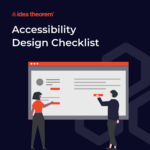In today’s digital-first world, delivering exceptional user experiences (UX) is more than good design—it requires intelligence. As AI becomes important in digital products, AI design patterns are helping to create user-friendly experiences. This guide explores how AI design patterns can shape next-gen UX, boost engagement, and drive user satisfaction.
What Are AI Design Patterns?
AI design patterns are repeatable solutions to common UX challenges that arise when integrating artificial intelligence into applications. These patterns help designers and developers create user interfaces that are:
- Intuitive
- Transparent
- Trustworthy
- Adaptive
They connect raw AI features with real-world use. This allows users to interact easily with smart systems.
Why AI Design Patterns Matter in Modern UX
Traditional design patterns don’t always account for AI behavior such as personalization, probabilistic responses, or continuous learning. That’s where AI design patterns shine—they anticipate user needs, provide dynamic feedback, and support human-AI collaboration.
Here’s why AI design patterns are vital for next-gen UX:
- Predictability: Users can understand how AI will behave.
- Control: Users feel empowered with actionable options.
- Transparency: Systems explain the logic behind decisions.
- Adaptability: Interfaces evolve based on usage and feedback.
AI is everywhere in digital products like chatbots, recommendation engines, and predictive analytics. Because of this, designing for AI is now a must.
Top AI Design Patterns Transforming UX
Let’s dive into the most powerful and widely adopted AI design patterns used by forward-thinking product teams:
1. Explainability Pattern: Users must understand how AI arrived at a decision. Whether it’s a loan application or a personalized feed, explainable AI (XAI) builds trust.
Example: A loan app shows “You’re approved because of your strong credit score and repayment history.”
Use Cases: Finance apps, healthcare diagnostics, recommendation engines
2. Confidence Indicator Pattern: AI is probabilistic, not deterministic. Showing confidence scores (e.g., 87% match) helps users make informed decisions.
Example: A job-matching app displays “82% fit based on skills and location.”
Use Cases: Job boards, legal tech, talent acquisition tools
3. User-in-the-Loop Pattern: This pattern includes the user in decision-making. This helps ensure that AI output is ethical and accurate.
Example: An AI content generator asks the user to approve or revise auto-written summaries.
Use Cases: Content creation, legal document generation, design assistants
4. Personalization Pattern: AI tailors experiences based on user behavior, preferences, and context. This is essential for engagement and conversion.
Example: A learning app suggests courses based on progress and past interests.
Use Cases: E-learning, eCommerce, fitness apps
5. Fallback Pattern: AI is imperfect. Always provide a fallback experience if AI fails or is unsure.
Example: “I didn’t understand that. Would you like to speak to a human agent?”
Use Cases: Chatbots, virtual assistants, voice interfaces
Best Practices for Designing with AI
Using AI design patterns is not just about copying templates. It is about making responsible, inclusive, and user-friendly AI experiences. Here are some best practices to guide your UX design process:
1. Start with User Intent: Focus on what users are trying to achieve. AI should support, not replace, user agency.
2. Design for Transparency: Use tooltips, visual cues, or microcopy to explain AI actions. Transparency reduces confusion and builds credibility.
3. Ensure Ethical AI Use: Avoid bias by validating datasets and allowing human overrides. Ethical AI is a pillar of sustainable UX.
4. Test with Real Users: AI behavior can be unpredictable. Conduct usability testing to refine feedback loops and minimize friction.
5. Collaborate Across Disciplines: Involve data scientists, UX designers, and product managers early. Designing with AI is a cross-functional effort.
Industries Leveraging AI Design Patterns for UX
Many sectors are adopting AI design patterns to drive next-gen user experience:
- Healthcare: AI-driven diagnosis tools use explainability and confidence patterns to guide doctors.
- Retail: E-commerce platforms use personalization and fallback patterns for smoother shopping journeys.
- Finance: Robo-advisors rely on user-in-the-loop patterns to ensure compliance and trust.
- EdTech: Adaptive learning tools employ AI to personalize content delivery.
Tools and Frameworks Supporting AI UX Design
For product teams looking to scale AI UX, the following tools can help:
- Figma Plugins for AI Design: Auto-generating mockups with AI capabilities
- Google’s People + AI Guidebook: UX guidelines for human-centered AI
- Microsoft’s Responsible AI Dashboard: Tools for explainability and fairness
- IBM’s AI Fairness 360: Bias detection and transparency toolkit
The Future of AI Design Patterns
As AI capabilities evolve—especially with generative AI and multimodal interfaces—design patterns will continue to adapt. Voice interfaces, emotional AI, and context-aware systems are the next frontier. The UX of tomorrow will be proactive, ambient, and personalized at scale.
Designing for AI is designing for the future.
How Idea Theorem Can Help
At Idea Theorem, we specialize in crafting human-centered, AI-powered digital experiences. Whether you’re integrating an intelligent assistant, building an AI dashboard, or deploying predictive analytics, our team ensures your product is user-friendly, ethical, and future-ready.
From UX strategy and UI design to AI integration and testing, we offer end-to-end design services to bring your next-gen product vision to life.
Explore our AI Design Services or Contact Us for a free consultation.
Final Thoughts
AI design patterns are not just design trends—they are critical to the success of intelligent products. By leveraging patterns like explainability, personalization, and fallback, product teams can create intuitive, inclusive, and intelligent user experiences.
Embrace the power of AI design patterns today to stay ahead in the age of next-gen UX.






